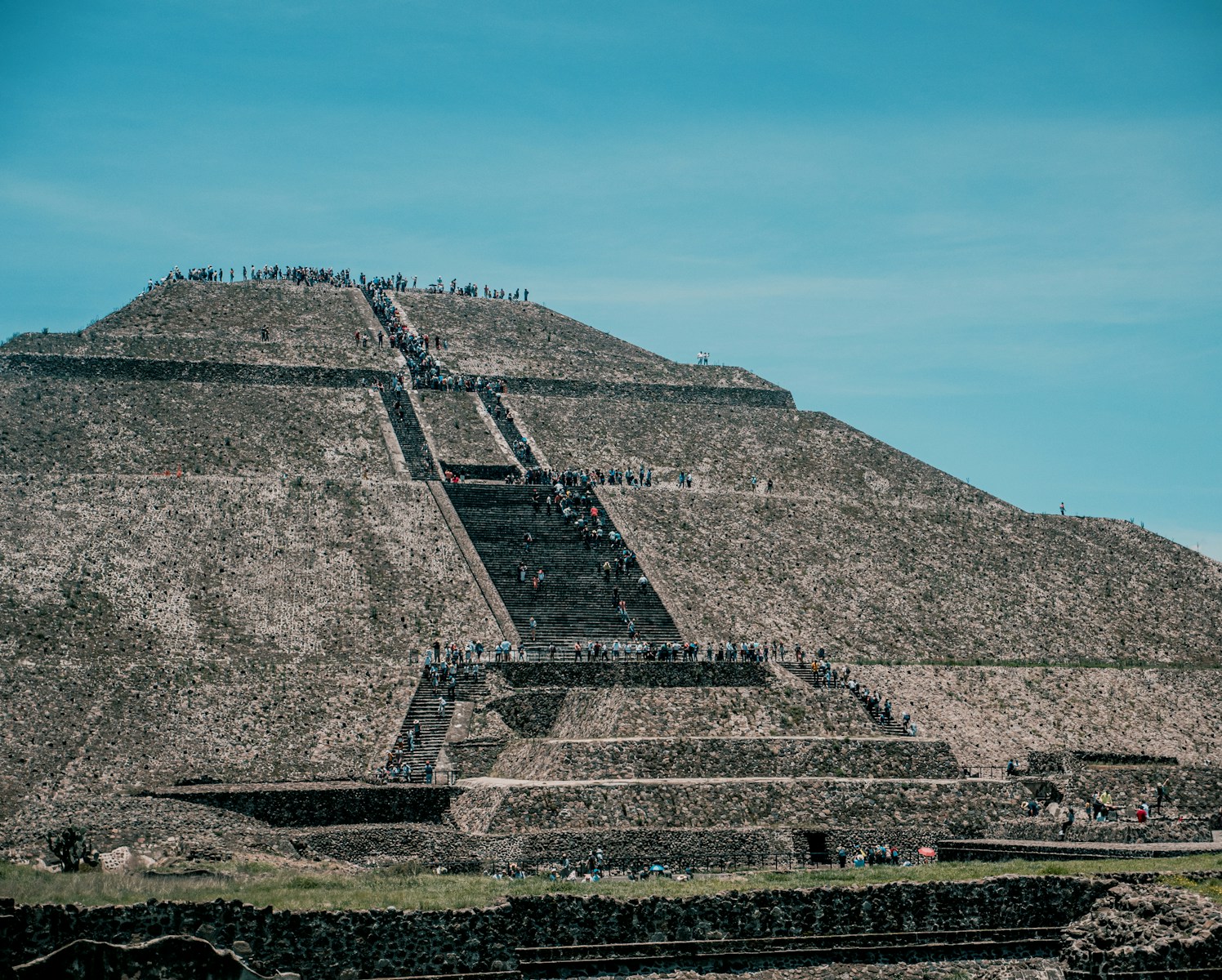Recent discoveries reveal that the ancient megacity of Teotihuacán held elaborate rituals involving the sacrifice of apex predators like jaguars, eagles, and wolves, shedding light on its complex spiritual and political life.
Key Points at a Glance
- Teotihuacán’s Legacy: A Mesoamerican megacity active between 100 BCE and 650 CE, with a peak population of over 100,000.
- Mass Sacrifices: Archaeologists uncovered remains of 12 humans and 200 animals, including 33 complete apex predator skeletons.
- Symbolism in Sacrifices: Animals like golden eagles and jaguars were revered as cosmic mediators and symbols of power.
- Cultural Significance: These rituals aligned with state politics and religious ideologies, involving thousands of spectators in elaborate performances.
Located about 30 miles northeast of modern-day Mexico City, Teotihuacán was a vibrant hub of culture, trade, and religion. The city’s influence extended across Mesoamerica, with its iconic architecture—including the Pyramids of the Sun and Moon—testifying to its grandeur. At its height, Teotihuacán housed over 100,000 residents, making it one of the earliest urban centers in the Americas.
The city’s inhabitants practiced rituals that involved the veneration and sacrifice of animals, a tradition that later influenced the Aztec Empire. These ceremonies were deeply rooted in the belief that apex predators served as intermediaries between the natural and supernatural realms.
In a groundbreaking excavation led by University of California, Riverside anthropologist Nawa Sugiyama, researchers uncovered four ritual chambers within the Moon Pyramid. These chambers contained the remains of 12 humans and 200 animals, including 33 complete skeletons of apex predators such as golden eagles, jaguars, and wolves. This discovery represents one of the most significant examples of mass animal sacrifices in Teotihuacán.
The largest chamber revealed a meticulously arranged scene, suggesting that the sacrifices were government-sanctioned spectacles performed before large audiences. “These rituals were political and religious acts designed to reinforce the state’s power,” Sugiyama explained. “They were a way to connect humans and animals with the cosmos, reflecting a profound understanding of their environment and spiritual beliefs.”
The sacrificed animals were not chosen at random. Golden eagles, jaguars, and wolves symbolized cosmic power and were believed to mediate between the sky, earth, and underworld. These predators were also dangerous and majestic, qualities that likely amplified their spiritual significance.
Bone chemistry analysis revealed intriguing details about these animals’ lives before their ritual use. Many were fed a maize-based diet, aligning with human agricultural practices of the time. This dietary overlap underscores the symbolic importance of maize, regarded as the essence of life and central to Mesoamerican creation myths.
Golden eagles played a particularly prominent role in these ceremonies. Sugiyama’s team discovered 18 golden eagle remains, believed to correspond to the 18 months of Teotihuacán’s 365-day calendar. These majestic birds likely entered the ceremonial space perched on the forearms or shoulders of state officials, paraded along the Calzada de los Muertos (Avenue of the Dead) to the Moon Pyramid.
Such ceremonies were not only acts of devotion but also powerful displays of statecraft. By orchestrating these spectacles, the ruling elite reinforced their divine authority and unified the population under shared religious and cultural ideologies.
Though separated by nearly a millennium, Teotihuacán’s rituals bear striking similarities to those of the Aztec Empire. The Aztecs conducted extensive animal sacrifices, offering over 400 species to their gods. This continuity highlights the enduring cultural and religious significance of such practices in Mesoamerican history.
Teotihuacán’s legacy continues to resonate in modern Mexican culture. The golden eagle, a central figure in the city’s rituals, remains a national symbol featured on Mexico’s flag. The archaeological findings offer a profound connection to this ancient heritage, enabling researchers to reconstruct the spiritual and political life of a civilization that shaped Mesoamerica.
“Through these material remains, we can directly access the beliefs and practices of the Teotihuacanos,” Sugiyama said. “The bones speak to us, revealing the intricate ways humans and animals coexisted and shaped their cosmos.”
The discoveries at Teotihuacán provide a vivid picture of how this ancient megacity wove together religion, politics, and ecology. These mass sacrifices were more than acts of devotion—they were demonstrations of power, unity, and cosmic connection. As research continues, archaeologists hope to uncover even more about the lives and beliefs of Teotihuacán’s residents, offering deeper insights into one of history’s most fascinating civilizations.
